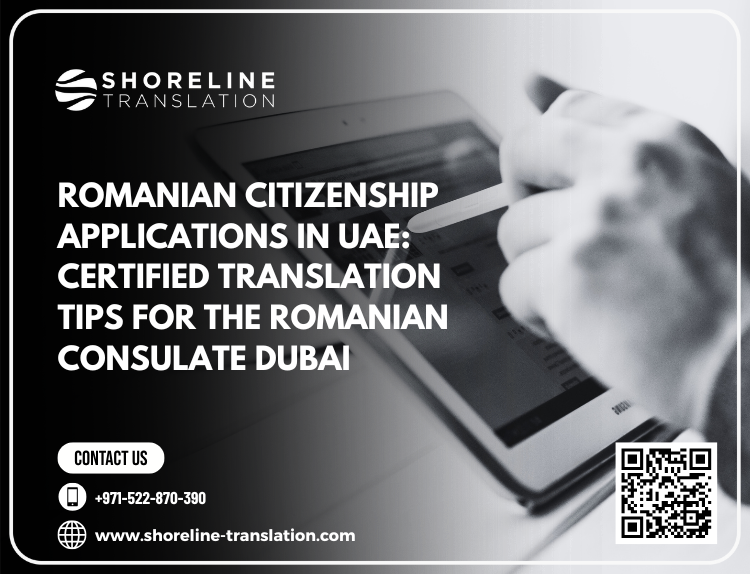Table of Contents
ToggleThe Power of Words: Why Accurate English to Urdu Translation Matters
Are you ready to unlock the power of words? In a world where communication knows no boundaries, accurate translation has become more important than ever. And when it comes to bridging the gap between English and Urdu, precision is key. Whether you’re a business expanding into new markets or an individual seeking to connect with others from different cultures, accurate English to Urdu translation can make all the difference. Join us as we explore why accuracy matters, the benefits it brings, and how it can enhance communication on a whole new level. Get ready for a linguistic journey like no other!

Importance of accurate translation
In today’s globalized world, accurate translation holds immense importance. It serves as the bridge that connects people from different cultures and languages, enabling effective communication and understanding. Translation accuracy ensures that the original message is conveyed without any distortion or misinterpretation. A minor mistake in translation can lead to significant misunderstandings, cultural insensitivities, or even loss of business opportunities. Therefore, accurate translation acts as a powerful tool for building strong connections and fostering cross-cultural relationships.
Moreover, accurate translation plays a vital role in preserving the integrity and authenticity of written content. Whether it’s translating legal documents, marketing materials, or literary works, maintaining accuracy is crucial to uphold the intended meaning and tone of the original text. It allows individuals to express their thoughts and ideas accurately while respecting cultural nuances and sensitivities. Accurate translation not only facilitates effective communication but also helps in establishing trust and credibility among diverse audiences.
Benefits of accurate English to Urdu translation
Accurate English to Urdu translation brings numerous benefits to individuals and communities alike. It allows for effective communication between English-speaking and Urdu-speaking individuals, bridging the language gap and facilitating understanding. This is particularly important in diverse multicultural societies where accurate translations enable people from different backgrounds to connect and share ideas.
Accurate translations help preserve the cultural nuances embedded within the original text. It ensures that idiomatic expressions, proverbs, and cultural references are accurately conveyed in a way that resonates with Urdu speakers. By preserving these cultural elements, accurate translations promote cross-cultural understanding and appreciation.
Additionally, precise English to Urdu translations maintain the intent and tone of the original text. Whether it’s a literary work or a business document, maintaining accuracy in translation ensures that the message is delivered as intended by the author. This helps avoid any misinterpretation or confusion that may arise from poorly translated content.
In conclusion,
accurate English to Urdu translation plays a vital role in promoting effective communication between different linguistic communities while preserving cultural richness. By enhancing cross-cultural understanding and enabling clear transmission of ideas, accurate translations empower individuals and strengthen global connections.
How accurate translations enhance communication
Accurate translations play a crucial role in enhancing communication between different languages. When words are accurately translated from English to Urdu, it ensures that the intended message is effectively conveyed and understood by the target audience. This helps bridge the gap between cultures and facilitates meaningful interactions.
By maintaining accuracy in translations, language barriers can be overcome, allowing individuals to express their thoughts and ideas with clarity. Accurate translations also help preserve cultural sensitivity by ensuring that nuances and customs specific to Urdu-speaking communities are properly conveyed. This promotes understanding and respect between cultures, fostering stronger relationships on both personal and professional levels.
Moreover, accurate translations preserve the intent and tone of the original text. The emotions or sentiments behind a piece of writing can be easily lost if not translated accurately. By capturing these nuances in translation, accurate renditions maintain the integrity of the original content while allowing for effective communication across language boundaries.
Accurate English to Urdu translation holds immense power in facilitating cross-cultural understanding and enabling effective communication. It empowers individuals and communities by breaking down language barriers while preserving cultural sensitivities. Through accuracy in translation, we can truly bridge gaps between languages, creating a world where everyone’s voices are heard loud and clear.
Accuracy in conveying meaning
Accurate translation is crucial when it comes to conveying meaning effectively. It ensures that the original message is accurately communicated in Urdu, allowing for clear understanding and interpretation. When words are translated accurately, they retain their intended meaning, helping to bridge the language barrier between English and Urdu speakers.
Inaccurate translations can lead to confusion and misinterpretation of the original text. By focusing on accuracy in conveying meaning, translators can ensure that the essence of a message is preserved, enabling effective communication across languages. This not only facilitates understanding but also fosters cultural exchange and appreciation.
Cultural sensitivity and accuracy
Accurate translation goes beyond simply converting words from one language to another. It involves understanding the cultural nuances, context, and sensitivities of both languages. When it comes to translating English to Urdu, cultural sensitivity is crucial in ensuring accurate communication.
Cultural sensitivity means being aware of the social and cultural values associated with a language. A skilled translator must consider these factors while converting a text from English to Urdu. This includes understanding idiomatic expressions, proverbs, and customs that may not have direct equivalents in the target language. By maintaining this level of accuracy and cultural sensitivity, translators can bridge the gap between different cultures and ensure effective communication for all parties involved.
By prioritizing cultural sensitivity in translations, we can avoid misunderstandings or offensive interpretations that could arise due to differences in culture or background. Accurate translations help convey messages accurately without compromising on the intent or tone of the original text. They enable individuals from different cultures to understand each other better and foster cross-cultural appreciation.
Preserving the intent and tone of the original text
When it comes to accurate translation, preserving the intent and tone of the original text is crucial. Translating from English to Urdu requires more than just finding equivalent words; it also involves understanding the context and emotions behind the content. By carefully preserving the intent and tone of the original text, translators ensure that readers in different languages can experience the same emotions and messages conveyed by the author.
By maintaining a faithful representation of the author’s intentions, accurate translations allow readers to connect with texts on a deeper level. Whether it’s capturing the humor, conveying urgency, or expressing empathy, accurately translating both meaning and tone ensures that readers in Urdu-speaking communities can fully appreciate and engage with English literature or any other form of written content. This preservation enhances cross-cultural understanding while creating an immersive reading experience for individuals across language barriers.
Challenges inaccurate translation
Accurate translation is a complex task that comes with its fair share of challenges. One major hurdle in achieving accuracy lies in the grammatical and syntactical differences between English and Urdu. The sentence structures, word orders, and tenses vary significantly, making it crucial for translators to have a deep understanding of both languages.
Another challenge arises from idiomatic expressions and cultural nuances that may not directly translate from English to Urdu. These unique phrases can hold significant meaning in one language but lose their impact when translated literally. Translators must navigate these intricacies carefully to ensure the intended message is conveyed accurately.
Maintaining clarity and coherence throughout the translation process can be another obstacle. It requires striking a balance between staying faithful to the original text while also adapting it to fit seamlessly into the target language’s cultural context. This delicate balancing act demands meticulous attention to detail and extensive knowledge of both languages involved.
Accurate translation entails overcoming various challenges related to grammar, idiomatic expressions, cultural nuances, clarity, and coherence. However difficult they may be, addressing these obstacles head-on paves the way for effective communication across different cultures and empowers individuals worldwide.
Common mistakes in English to Urdu translation
Accurate translation from English to Urdu is essential for effective communication. However, there are common mistakes that can hinder the accuracy of the translated text. One challenge is with grammatical and syntactical differences between the two languages. These differences can lead to incorrect sentence construction, resulting in a loss of meaning or confusion for the reader.
Another common mistake is related to idiomatic expressions and cultural nuances. Translating these expressions word-for-word may not convey their intended meaning in Urdu, as they often have specific cultural connotations that may be lost in translation. Translators need to understand these nuances and find equivalent expressions in Urdu that accurately capture the original intent.
Maintaining clarity and coherence is also crucial when translating from English to Urdu. The structure of sentences and paragraphs should be carefully considered so that the message flows smoothly and remains cohesive in both languages.
By being aware of these common mistakes, translators can strive for more accurate translations from English to Urdu, ensuring that the meaning, tone, and nuance of the original text are preserved effectively.
Grammatical and syntactical challenges
When it comes to accurate English to Urdu translation, one of the biggest challenges lies in navigating the grammatical and syntactical differences between the two languages. Urdu has a unique sentence structure and grammar rules that may differ significantly from English. Translators must carefully consider these nuances to ensure a faithful representation of the original text.
Grammatical challenges can range from differences in verb tenses and noun phrases to word order and agreement. Translators need to have a deep understanding of both languages’ grammatical structures, enabling them to accurately convey meaning while maintaining coherence in the translated text. These challenges require meticulous attention to detail and expertise in both English and Urdu grammar rules.
Idiomatic expressions and cultural nuances
Idiomatic expressions and cultural nuances play a crucial role in accurate English to Urdu translation. These unique linguistic elements reflect the cultural identity of a language and can greatly impact the meaning and tone of a text. Translators must navigate these intricacies to ensure that their translations capture the essence of the original message.
In Urdu, idiomatic expressions are commonly used to convey certain emotions or ideas that may not have direct equivalents in English. For example, phrases like “Dil ka dard” (heartache) or “rooh afza” (refreshing) carry specific connotations that require careful consideration during translation. Similarly, understanding cultural nuances is essential for accurately conveying context-specific references or customs. By recognizing these subtleties, translators can bridge the gap between languages and help readers fully grasp the intended meaning behind a text.
Maintaining clarity and coherence
Maintaining clarity and coherence is crucial in accurate English to Urdu translation. The translated text should be clear and easy to understand, ensuring that the intended message is conveyed effectively. This requires careful attention to grammar, syntax, and sentence structure.
Additionally, coherence plays a significant role in maintaining the flow of information between languages. Translations should maintain logical connections between sentences and paragraphs, allowing readers to follow the text without confusion. By ensuring clarity and coherence in translations, both the original meaning of the text and its overall structure can be preserved for Urdu-speaking audiences.
Tools and resources for accurate translation
Reliable online translation services and specialized companies like Shoreline offer valuable tools and resources for accurate English to Urdu translation. These platforms utilize advanced algorithms and language databases to ensure precise translations. They are equipped with features that cater specifically to the nuances of Urdu, such as its unique script and grammar rules. Engaging their services can provide individuals or businesses seeking accurate translations with a convenient and efficient solution.
Collaborating with professional translators is another essential resource for achieving accurate English to Urdu translation. These experts have in-depth knowledge of both languages, allowing them to accurately convey the meaning, tone, and intent of the original text. Their experience ensures they navigate cultural sensitivities while maintaining clarity and coherence in the translated content. Working closely with these professionals promotes effective communication between different cultures and enhances cross-cultural understanding.
Reliable online translation services
When it comes to accurate translation, reliable online translation services can be a game-changer. With just a few clicks, you can have your English text expertly translated into Urdu, ensuring accuracy and precision. These online platforms utilize advanced algorithms and databases to provide quick and efficient translations, making them a convenient option for individuals or businesses in need of accurate English to Urdu-translations.
However, while these services offer speed and convenience, it’s important to note that they may not always guarantee 100% accuracy. Machine translations often struggle with idiomatic expressions and cultural nuances that require human intervention for an accurate interpretation. Therefore, when seeking reliable online translation services, it’s crucial to choose ones that employ professional human translators who are well-versed in both languages to ensure the highest level of accuracy possible.
Shoreline Company for Professional English into Urdu Translation
Shoreline Company is a leading provider of professional English into Urdu translation services. With their team of experienced translators, they ensure accurate and culturally sensitive translations that effectively convey the meaning and tone of the original text.
Their commitment to quality and attention to detail make them a reliable choice for businesses, organizations, and individuals seeking accurate translations. Whether it’s translating documents, websites, or marketing materials, Shoreline Company ensures that the translated content maintains clarity and coherence while capturing the essence of the source material. Trust Shoreline Company for all your English to Urdu translation needs!
Collaborating with professional translators
Collaborating with professional translators is a crucial step in ensuring accurate English to Urdu translation. These language experts possess the necessary skills and expertise to handle complex translations effectively. By working closely with them, you can ensure that your message is accurately conveyed in the target language.
Professional translators have a deep understanding of both languages and are well-versed in the cultural nuances, idiomatic expressions, and grammatical structures of each. They can provide valuable insights and suggestions to enhance the translation process. Their attention to detail ensures that every word is carefully chosen, preserving the intent and tone of the original text.
Best practices for accurate translation
Understanding the context and target audience is crucial when it comes to accurate translation. It’s important to consider the cultural nuances, idiomatic expressions, and social norms that may exist in both languages. Conducting thorough research and fact-checking are essential steps in ensuring accuracy. This involves verifying terminology, checking for any potential bias or misinformation, and consulting reliable sources. Additionally, reviewing and proofreading the translated text can help catch any errors or inconsistencies that may have been overlooked during the initial translation process.
Collaborating with professional translators who specialize in English to Urdu translation is another best practice for achieving accuracy. These experts possess a deep understanding of both languages and cultures involved, allowing them to accurately convey meaning while preserving the intent and tone of the original text. Their expertise ensures that translations maintain clarity and coherence throughout, eliminating any confusion or misinterpretation that could arise from inaccurate translations done by automated tools or inexperienced individuals.
Understanding the context and target audience
Understanding the context and target audience is crucial in accurate English to Urdu translation. It requires a deep understanding of the cultural background, customs, and norms. By considering these factors, translators can ensure that the translated text resonates with the intended readers.
Moreover, adapting the language style and tone to suit the target audience is essential. Whether it’s a formal document or a creative piece, tailoring the translation based on who will be reading it helps convey meaning effectively. By taking into account these aspects during translation, we can bridge communication gaps and create content that truly connects with Urdu-speaking audiences.
Conducting thorough research and fact-checking
Conducting thorough research and fact-checking is a crucial aspect of accurate translation from English to Urdu. It ensures that the translated text is not only linguistically correct but also contextually appropriate.
Researching extensively about the subject matter helps translators understand the nuances, cultural references, and idiomatic expressions present in the original text. This knowledge enables them to accurately convey the intended meaning in Urdu while maintaining clarity and coherence. Additionally, fact-checking plays a vital role in ensuring that any factual information presented in the source text is accurately translated without any errors or misinterpretations.
By devoting time and effort to conducting thorough research and fact-checking, translators can deliver high-quality translations that effectively communicate the message across language barriers.
Reviewing and proofreading the translated text
Reviewing and proofreading the translated text is a crucial step towards ensuring accuracy in English to Urdu translation. It involves carefully examining the translated content to identify any errors or inconsistencies that may have occurred during the translation process. This can include checking for grammatical mistakes, punctuation errors, incorrect word choices, and overall coherence of the translated text.
By reviewing and proofreading the translated text, translators can catch any potential mistranslations or misinterpretations that could impact the message being conveyed. It helps to ensure that the intended meaning of the original English text is accurately captured in Urdu, avoiding any confusion or misunderstanding for the target audience. Additionally, proofreading allows for fine-tuning of sentence structure and language flow to enhance readability and maintain consistency throughout the translation.
Reviewing and proofreading play a vital role in delivering accurate translations by meticulously scrutinizing every aspect of the final product. It provides an opportunity to refine and polish the translated content before it reaches its intended audience in Urdu-speaking communities. By investing time and effort into this important step, translators can deliver high-quality translations that effectively convey information while maintaining cultural sensitivity and linguistic precision.
The impact of accurate English to Urdu translation
The impact of accurate English to Urdu translation goes far beyond just words on a page. It has the power to strengthen cross-cultural understanding, facilitate effective communication, and empower individuals and communities.
When translations are done accurately, they bridge the gap between different languages and cultures. They promote empathy, respect, and appreciation for diverse perspectives. Accurate translations also help break down barriers and foster meaningful connections among people from different backgrounds.
In addition, accurate translations enable effective communication by ensuring that messages are conveyed clearly and precisely. By accurately translating important information, instructions, or documents into Urdu, individuals can access the same level of understanding as those who speak English fluently. This not only promotes inclusivity but also enables everyone to fully participate in various activities such as education, healthcare services, legal processes, and more.
Accurate English to Urdu translation has the potential to empower individuals and communities by enabling them to access knowledge and opportunities that would otherwise be inaccessible without proper language support. It allows individuals to express themselves effectively in their native language while also fostering mutual respect and understanding among diverse populations.
Strengthening cross-cultural understanding
Strengthening cross-cultural understanding is a vital aspect of accurate English to Urdu translation. When words are translated accurately, it allows individuals from different cultures to connect and communicate effectively. It bridges the gap between languages and fosters empathy, respect, and appreciation for diverse perspectives.
Accurate translations help in breaking down barriers and promoting inclusivity. They enable people to understand each other’s experiences, beliefs, and values. This leads to better cross-cultural relationships and collaborations, fostering harmony in an increasingly interconnected world. By accurately translating content into Urdu, we can promote cultural exchange and create a more inclusive society where everyone feels valued and understood.
Facilitating effective communication
Effective communication is crucial in any language, and accurate English to Urdu translation plays a significant role in facilitating this process. When translations are precise, it allows individuals who may not share the same language to understand each other’s ideas, thoughts, and emotions. This enhances communication by bridging the gap between different cultures and creating connections that would otherwise be impossible.
Accurate translations ensure that messages are conveyed clearly and accurately without any loss of meaning or misinterpretation. By providing accurate English to Urdu translations, individuals can communicate effectively across languages, enabling them to express themselves authentically and be understood by others. This promotes understanding, empathy, and effective collaboration between diverse groups of people.
Empowering individuals and communities
Accurate English to Urdu translation has the power to empower individuals and communities. By providing accurate translations, individuals who speak Urdu as their primary language can access important information, resources, and opportunities that may have been previously inaccessible. This empowerment allows them to participate more fully in society, make informed decisions, and engage with a wider range of perspectives.
Furthermore, accurate translations also help bridge communication gaps within communities. When people can understand each other’s languages accurately, they are better equipped to collaborate on projects, share ideas and knowledge, and build stronger relationships. This increased understanding fosters unity among community members and promotes inclusivity by ensuring that everyone can contribute their unique insights and experiences.
In short, accurate English to Urdu translation plays a crucial role in empowering individuals by providing them with equal access to information and opportunities. It also strengthens communities by facilitating effective communication and fostering a sense of belonging for all members. Through these empowered individuals and cohesive communities comes the potential for positive change at both individual levels as well as societal scales.
Conclusion
Accurate English to Urdu translation is of paramount importance in today’s globalized world. It serves as a bridge that connects people from different cultures, enabling effective communication and fostering cross-cultural understanding. The power of words cannot be underestimated, and accurate translation plays a crucial role in conveying meaning, preserving the intent and tone of the original text, and maintaining cultural sensitivity.
While there are challenges in achieving accurate translations, such as grammatical complexities, idiomatic expressions, and cultural nuances, there are also various tools and resources available to aid translators in their work. Online translation services can provide reliable assistance, but for professional English to Urdu translation needs, companies like Shoreline Company offer specialized expertise.
To ensure accuracy in translation practices, it is essential to follow best practices. This includes understanding the context and target audience of the translated text, conducting thorough research and fact-checking to maintain credibility, as well as reviewing and proofreading the translated content for clarity and coherence.
The impact of accurate English to Urdu translation goes beyond mere language proficiency. It strengthens cross-cultural understanding by breaking down barriers between communities. Effective communication becomes possible when ideas are accurately conveyed without misinterpretation or confusion. Furthermore, empowering individuals through accurate translations enables them to access information that can enhance their personal growth while nurturing vibrant communities.
In conclusion (without using “In conclusion”), precise English to Urdu translation matters because it has a profound influence on our interconnected world. By bridging linguistic gaps with accuracy and cultural sensitivity, we can foster mutual respect among diverse cultures while promoting effective cross-cultural communication – ultimately contributing towards building a more inclusive society where every voice is heard.





